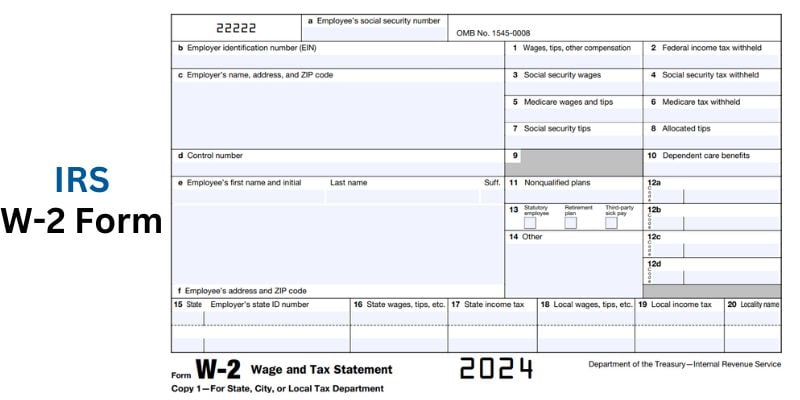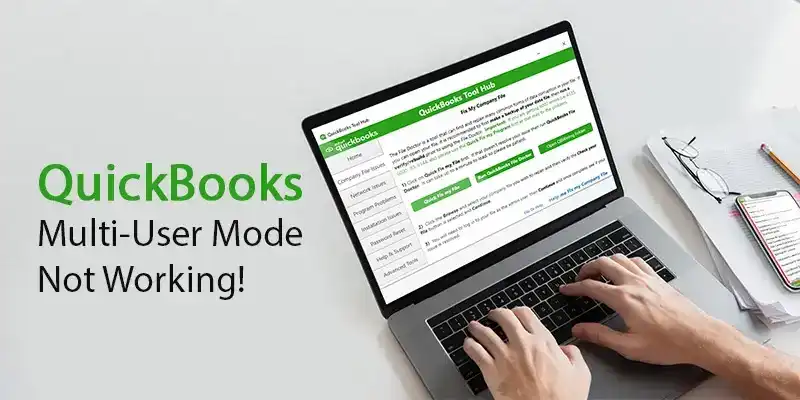
What Is a W-2 Form? Benefits and How to Use It for Tax Filing
The W-2 form is a crucial document for every employee. It provides a summary of your income, taxes withheld, and other important information from your employer for the previous year. This information is essential for accurately filing your federal and state income tax returns.

What is a W-2 Form?
A W-2 form, officially known as the Wage and Tax Statement, is a document that employers in the United States must send to each employee and the Internal Revenue Service (IRS) at the end of the year. It reports the employee’s annual wages and the amount of taxes withheld from their paycheck. The W-2 form includes important information such as:
- Employee’s total earnings for the year.
- Federal, state, and other taxes withheld.
- Social Security and Medicare taxes withheld.
- Contributions to retirement plans or other benefits.
Employees use the information on the W-2 form to file their annual tax returns and ensure they have paid the correct amount of taxes throughout the year.
Here are the Instructions for Forms W-2 and W-3: https://www.irs.gov/instructions/iw2w3
Here are PDF of W-2 Forms: https://www.irs.gov/pub/irs-pdf/fw2.pdf
Benefits of the W-2 Form
- Compliance: The W-2 form helps everyone play by the tax rules! It shows exactly how much you earned and how much tax your employer took out throughout the year. This ensures both you and your employer are following federal and state tax laws.
- Tax Reporting: For employees, the W-2 form simplifies the process of reporting income and taxes paid to the Internal Revenue Service (IRS) when filing annual tax returns. This reduces the likelihood of errors and discrepancies, minimizing the risk of audits or penalties.
- Accuracy: By providing a standardized format for reporting income and tax information, the W-2 form promotes accuracy and consistency in tax reporting, facilitating efficient processing by tax authorities and minimizing the need for manual review or correction.
- Verification: Employers use the W-2 form to verify the accuracy of their payroll records and ensure that employees are accurately compensate and taxed according to their earnings and withholding status.
- Documentation: Your W-2 is like a financial report card. It shows your earnings and taxes for the year, which can be helpful when applying for loans, mortgages, or even government benefits.
- Transparency: By providing employees with a transparent breakdown of their earnings, deductions, and taxes withheld, the W-2 form promotes transparency and trust between employers and employees, fostering a positive working relationship.
How to Obtain a W-2 Form
Obtaining a W-2 form is a straightforward process, typically facilitated by your employer.
- Wait for Distribution: Employers are required by law to distribute W-2 forms to employees by January 31st of each year. If you haven’t received your W-2 by early February, contact your employer’s payroll or human resources department to inquire about its status.
- Check Online Access: Many employers provide electronic access to W-2 forms through their payroll or employee self-service portals. Log in to your account on the company’s website and navigate to the section for tax documents or payroll records. Look for an option to download or view your W-2 form electronically.
- Contact Payroll Department: If your employer does not offer electronic access or if you encounter any issues with accessing your W-2 online, reach out to the payroll department directly.
- Request Reissue: If you misplaced or never received your W-2 form, contact your employer’s payroll or HR department of our company to request a reissue.
- Use IRS Assistance: If you’re unable to obtain your W-2 form from your employer and have exhausted all other options, you can contact the Internal Revenue Service (IRS) for assistance. The IRS can help you obtain a copy of your W-2 from your employer or provide guidance on alternative solutions.
When Do W2 Come Out 2024
W-2 forms, essential for tax filing, are typically distributed by employers to their employees. In 2024, employers must provide W-2 forms no later than January 31st. These forms can be delivered through electronic means or traditional postal mail. If you haven’t received your W-2 by mid-February, take proactive steps to ensure its delivery.
Understanding W-2 Reporting Requirements
- Employee Information: The employee’s full name, Social Security number (SSN), address, and other identifying details.
- Wage and Tax Information: Form W-2 must include detailed information about wages earned by the employee during the tax year, including wages, tips, bonuses, and other compensation. It also reports taxes withheld, such as federal income tax, Social Security tax, and Medicare tax.
- Deadline for Filing: Employers are require to provide employees with their W-2 forms by January 31st of the following year.
- Corrections and Amendments: Employers may need to make corrections or amendments to W-2 forms if errors are discovered after the initial filing. Correcte forms, known as Form W-2c, must be fill with the SSA and provide to the employee as soon as possible.
- Electronic Filing Requirements: Employers with 250 or more employees are required to file W-2 forms electronically with the SSA. However, electronic filing is encouraged for all employers due to its efficiency and accuracy.
- Penalties for Non-Compliance: Failure to comply with W-2 reporting requirements can result in penalties imposed by the IRS. Penalties may be assessed for late filing, inaccuracies, or failure to provide W-2 forms to employees.
W-2 Forms and Tax Preparation
As tax season approaches, individuals and businesses alike are gearing up to ensure accurate tax reporting and compliance with IRS regulations. One essential component of this process is the W-2 form, which plays a significant role in individual tax preparation and is a crucial tool for CPAs in assisting their clients with tax returns.
Here’s a detailed look at the role of the W-2 form in tax preparation and how CPAs can efficiently handle these forms during the busy tax season.
Role of the W-2 Form in Individual Tax Preparation
The W-2 form, also known as the Wage and Tax Statement, provides a detailed summary of an employee’s annual earnings and the taxes withheld by their employer throughout the tax year. For individual taxpayers, the W-2 serves as a critical document for accurately reporting income and calculating tax liabilities. It includes essential information such as wages, tips, bonuses, and other compensation, as well as taxes withheld for federal income tax, Social Security, and Medicare. Individuals must ensure that the information reported on their W-2 form matches their personal records and use it to complete their tax returns, including Form 1040 or other relevant tax forms.
How CPAs Use W-2 Forms to Prepare Tax Returns for Clients
Certified Public Accountants (CPAs) play a vital role in assisting individuals and businesses with tax preparation and planning. When working with individual clients, CPAs rely on W-2 forms to accurately report earned income and withholdings, ensuring compliance with tax laws and maximizing potential refunds. CPAs meticulously review W-2 forms to identify any discrepancies or errors that could impact their clients’ tax liabilities. They use the information provided on W-2 forms to prepare and file tax returns on behalf of their clients, leveraging their expertise to navigate complex tax regulations and optimize tax outcomes.
Tips for CPAs on Efficiently Handling W-2 Forms During Tax Season
- Organize W-2 Forms Early
- Verify Accuracy
- Stay Updated on Tax Law Changes
- Utilize Tax Preparation Software
- Provide Guidance to Clients
Conclusion
The W-2 form is pivotal in tax reporting, serving as a vital tool for both employees and employers. It simplifies tax filing for employees by providing a clear record of annual earnings and taxes withheld, reducing errors and ensuring IRS compliance. Employers benefit from its role in tracking payroll and tax withholding, minimizing issues with tax authorities. For CPAs, the W-2 is essential for preparing accurate tax returns, allowing them to efficiently calculate liabilities and identify tax-saving opportunities, aiding clients in navigating tax season confidently.
FAQ’s
When do w2 come out 2024
Employers are legally require to send W-2 forms to employees by each year of January 31st, 2024.
What is a W2 form used for?
The W-2 form (Wage and Tax Statement) is used to report an employee’s annual earnings and taxes withheld by their employer. It’s crucial for employees to file their tax returns accurately.
Who must file Form W-2?
Employers must file Form W-2 for every employee they paid wages or compensation of $600 or more during the tax year.
How do I get my W2 form?
Employers are require to send W-2 forms to employees by January 31st of each year. You can also access them electronically through your employer’s payroll portal
What is the difference between a W-2 and a W-4?
Main difference between a W-2 and a W-4 is their purpose and timing. A W-4, also known as the Employee’s Withholding Certificate, is filled out by an employee when they start a new job to indicate their withholding allowances for federal income tax purposes. W-2, or Wage and Tax Statement, is provided by employers to employees at the end of the year and summarizes the employee’s earnings and taxes withheld throughout the year. Essentially, the W-4 informs how much tax to withhold, while the W-2 reports how much tax was withheld.
What is the difference between W-2 and 1099?
The W-2 form is design for employees, providing a comprehensive report of wages earne and taxes withheld by their employer for the year, essential for accurate tax filing. Conversely, the 1099 form caters to independent contractors and freelancers, detailing income received from clients or businesses that are not their employers, placing the responsibility of tax payment on the recipient.
How to get w2 from previous employer?
To obtain a W-2 form, first, check your records for any physical or electronic copies you may have received previously, such as through a payroll portal. If you can’t locate it, however, reach out to your previous employer’s payroll or HR department. They can often provide a copy or reissue a new one. Alternatively, if your employer is unable to assist, you can request a wage and income transcript from the IRS. However, be aware that this process may take some time to complete.






